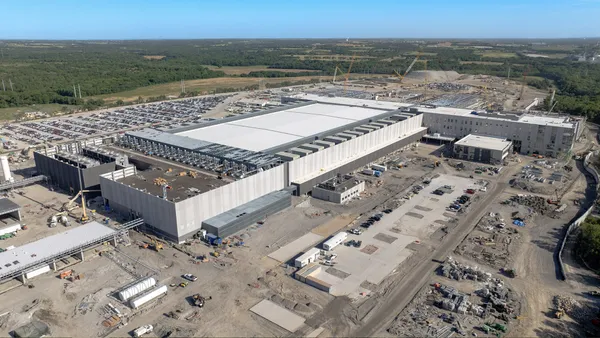Dive Brief:
- The city of Las Vegas unveiled a digital twin of a 7-square-kilometer section of its downtown earlier this month to help model current and future scenarios that will help it set priorities and take action to address energy use, emissions, traffic, parking, noise, and emergency management.
- The digital model is a collaboration between the city, Chicago-based digital twin platform Cityzenith and Las Vegas-based data firm Terbine. The model uses street-level data collected in real time through Internet of Things sensors and the city's 5G network.
- Unveiled at the annual Consumer Electronics Show in Las Vegas, the project will help the city visualize data that it can share with other organizations for planning and training. Future stakeholders could include real estate owners, university researchers, architects and casino operators, according to project organizers.
Dive Insight:
Digital twins, which effectively create a workable computer model of a city at a point in time, are becoming popular tools for smart cities to study the impacts of development, climate change or other future events. The data-rich environments allow planners to observe the effects of changes in everything from temperature and emissions to traffic. Cities including Boston, Los Angeles and Galveston, Texas, are among those that either have or are planning digital twins.
Las Vegas Chief Innovation Officer Michael Sherwood said the tool could be used to model scenarios addressing sustainability, emergency management and mobility and will provide a more sophisticated look at how problems develop and could be addressed.
Cityzenith's partnership with Las Vegas is part of the company's “Clean Cities - Clean Future” initiative, which aims to use its SmartWorldOS platform to help reduce urban emissions and improve cost efficiencies for building owners. The program — which it piloted in downtown Phoenix and Brooklyn's Navy Yard industrial park — models emission cuts from the building sector to optimize sustainability policies. The company plans to debut net-zero digital twins for Los Angeles and Phoenix soon, with a dozen other cities to follow.
A May 2021 report from Ernst & Young predicted that digital twins used in construction and real estate could help commercial property and infrastructure owners reduce energy consumption by up to 50% and reduce operating costs by 35%.
"Transitioning our home city into a clean, sustainable, and more attractive place to live and visit is a fantastic opportunity, and we're delighted with our progress so far on this project,” said Terbine founder and CEO David Knight in a press release. “What we're building here represents a model for how other cities can enable sustainability and a better quality of life for their citizens."
Sherwood said the Las Vegas twin is in “the very early stages,” but it will collect data on issues including mobility, air quality, noise, emissions and traffic. Currently, the city's focus is on pilot projects that will “allow the city to review and experiment with the viability and validity of the technology,” with the intent to scale up the technology going forward.
“The use of digital twin technology complements our efforts" to use technology "to improve operational efficiency and generate positive community outcomes" in areas including education, wellbeing, public safety, mobility, economic development, and sustainability, Sherwood said. He expects the project "will provide leaders with more precise data for planning and decision making.”













